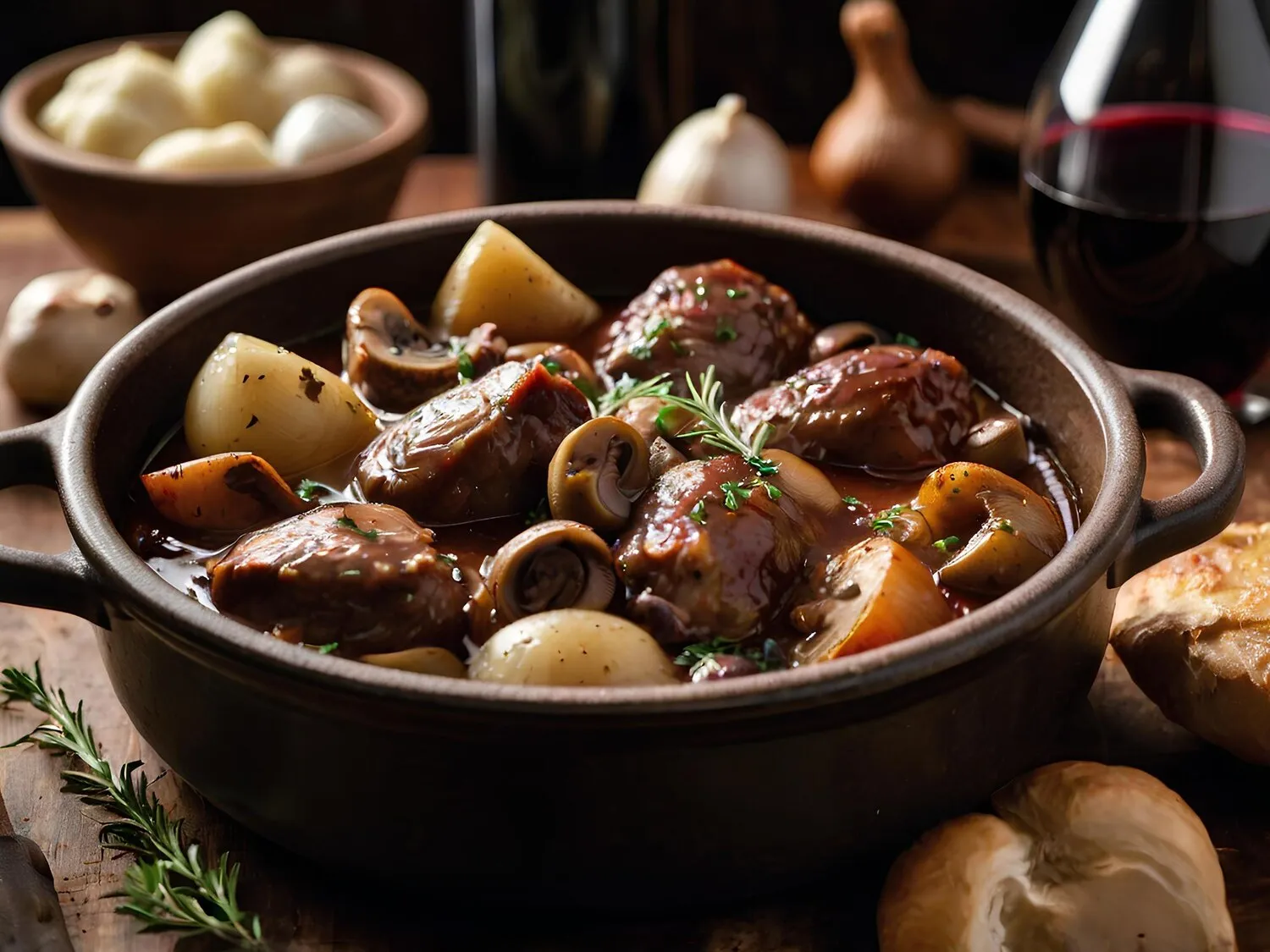
Tête de Veau
Calf's head, a classic French dish. Preparation and presentation can vary, but it's generally slow-cooked and served with a rich sauce.
Nutrition Facts
* The % Daily Value (DV) tells you how much a nutrient in a serving of food contributes to a daily diet. 2,000 calories a day is used for general nutrition advice.
Tête de Veau, or calf's head, has a long history in French cuisine, likely originating as a way to utilize all parts of the animal, reflecting a traditional nose-to-tail eating philosophy. Its popularity ebbed and flowed throughout history, influenced by economic conditions and culinary trends.
Tête de Veau is considered a classic French dish, though it may be less commonly found on restaurant menus today than in the past. It represents a traditional culinary approach valuing resourcefulness and the utilization of all parts of the animal. It is often associated with bistro and family-style cooking.
Nose-to-Tail Eating
Tête de Veau exemplifies the 'nose-to-tail' philosophy of cooking, where all parts of the animal are used to minimize waste and maximize flavor. This approach is rooted in traditional culinary practices and reflects a respect for the animal.
Regional Variations
While the basic concept of slow-cooked calf's head remains consistent, regional variations exist in the preparation and sauces used. Some regions might favor a different type of sauce or incorporate specific local ingredients.
Culinary Heritage
Tête de Veau is viewed as part of France's rich culinary heritage, representing a connection to traditional cooking methods and ingredients. While not always a mainstream dish, it remains appreciated by those seeking authentic French cuisine.
Tête de Veau features a rich, savory flavor profile, with a tender texture and a blend of subtle spices. The sauce, often Gribiche or Ravigote, adds a tangy and herbaceous counterpoint to the richness of the calf's head.
The calf's head itself provides a delicate, slightly sweet flavor that is enhanced by slow cooking. The various parts of the head, including the cheek, tongue, and brain (optional), each contribute a unique texture. Common flavor additions during cooking include aromatics like onions, carrots, celery, bay leaves, and peppercorns. The sauces, such as Sauce Gribiche (a mayonnaise-based sauce with capers, gherkins, herbs, and hard-boiled eggs) or Sauce Ravigote (a vinaigrette-based sauce with similar ingredients), provide acidity and freshness.
Sourcing and Preparation
Find a reputable butcher who can provide a properly cleaned and prepared calf's head. Thorough cleaning is essential to remove any impurities.
Slow Cooking is Key
Low and slow cooking is crucial for tenderizing the calf's head and developing its rich flavor. Be patient and allow ample time for the cooking process.
Balance the Flavors
Pay attention to the balance of flavors in your sauce. The acidity and herbaceousness of the sauce should complement the richness of the calf's head without overpowering it.
Serving Temperature
Serve the Tête de Veau hot with the sauce generously spooned over it. Warm plates help maintain the temperature.
Explore additional Traditional French dishes and restaurants
Explore Traditional FrenchDiscover top dining spots and culinary experiences in Nancy.
Explore NancyLearn more about the food culture, restaurant scene, and culinary heritage of France.
Explore France